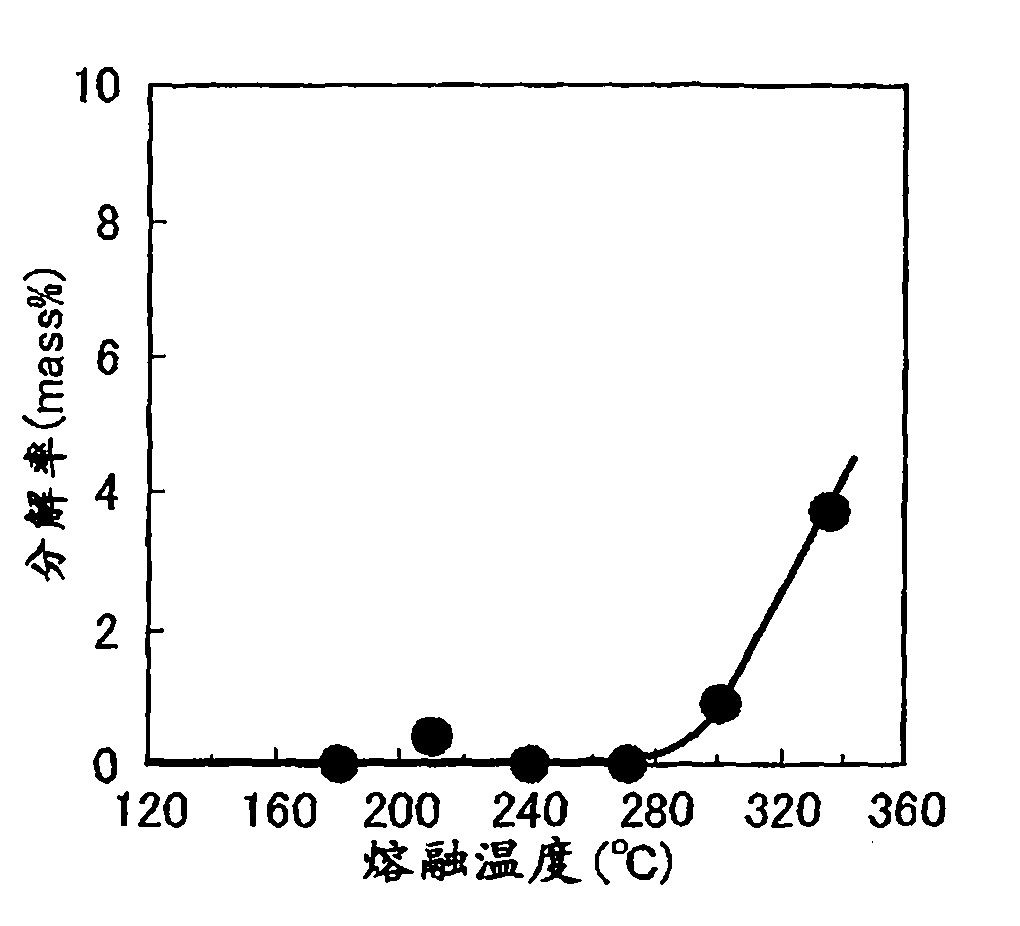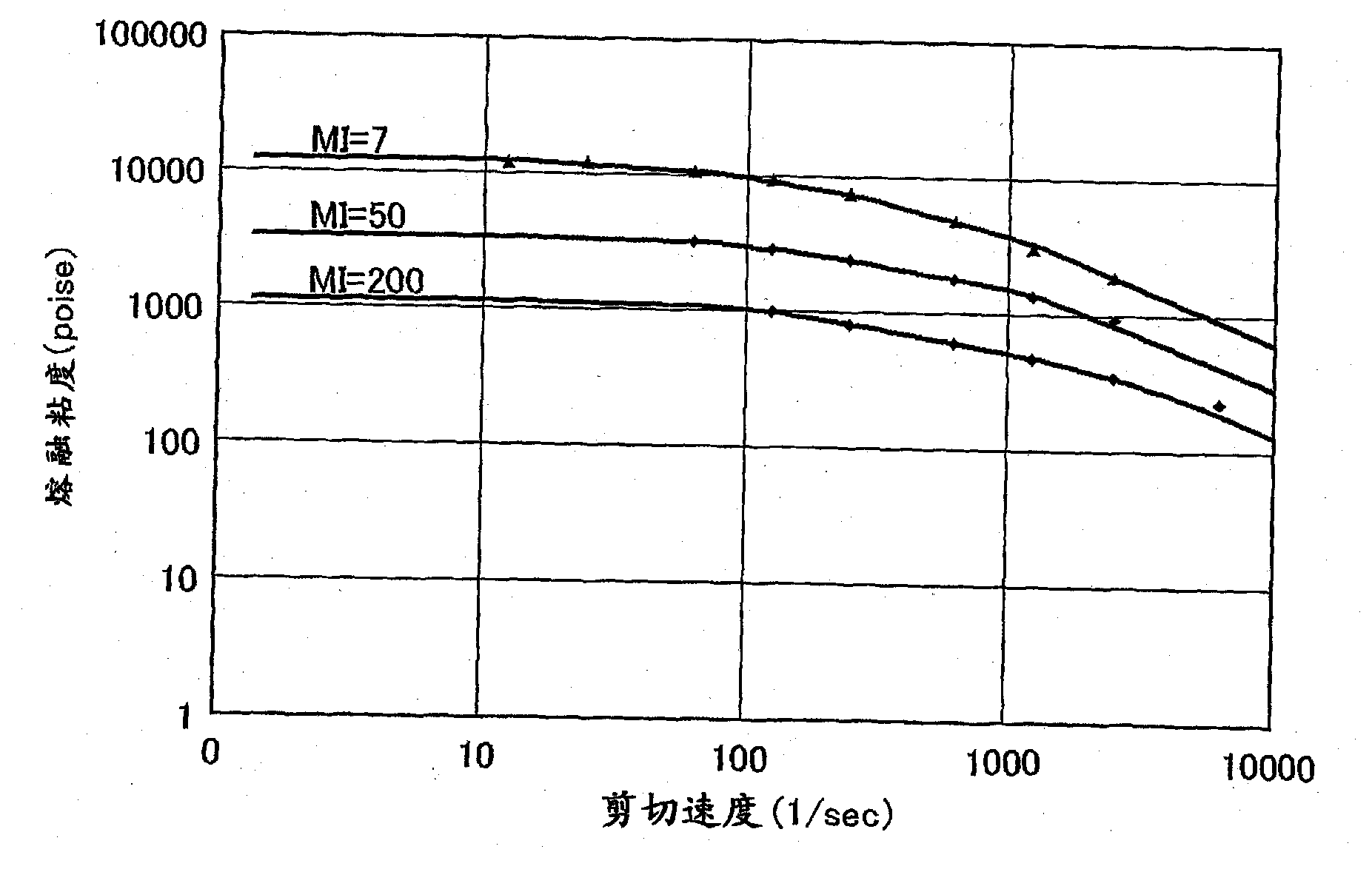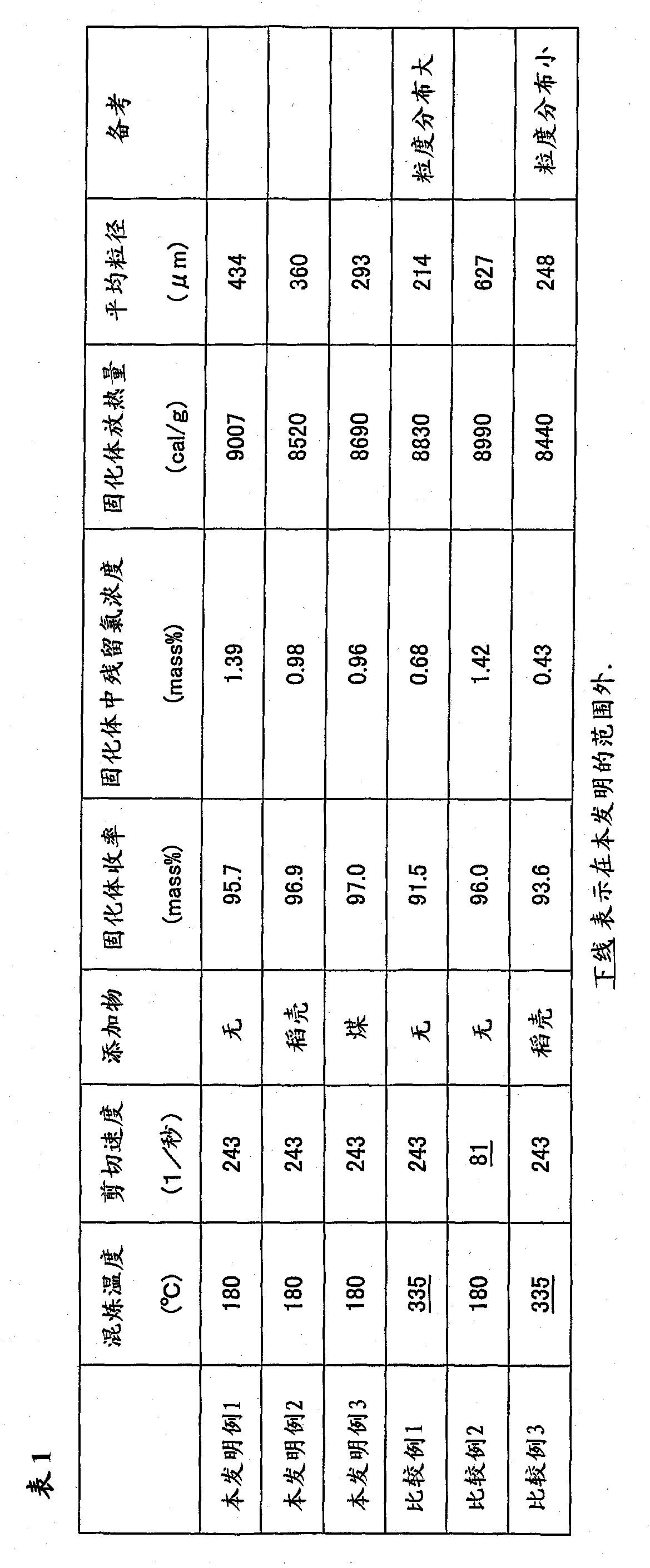Method for producing pulverized waste plastic and solid fuel or mineral reduction material
A manufacturing method and technology for solid fuels, which can be applied to waste fuels, solid fuels, biofuels, etc., can solve the problems of hydrogen chloride generation, unknown grindability of waste plastics, existence of corrosion furnaces, etc., and achieve productivity improvement, low cost, and economical mass processing effect
- Summary
- Abstract
- Description
- Claims
- Application Information
AI Technical Summary
Problems solved by technology
Method used
Image
Examples
Embodiment 1
[0067] Hereinafter, the present invention will be described in more detail based on examples.
[0068] [Example 1 of the present invention] After crushing general waste container and packaging waste plastics to about 1 cm, they were melted and kneaded at 180° C. with a twin-screw extruder. The shear rate during kneading was 243 (1 / sec) (screw diameter 31 mm, gap between screw and barrel 0.2 mm, screw rotation speed 30 rpm, shear rate π×31×30 / 60 / 0.2=243). Generation of moisture (water vapor) was confirmed from the vent hole of the extruder, but flammable decomposition gas was not confirmed. This was air-cooled as it was, and a lump (hardened body) of about 30 mm was obtained.
[0069] The yield of the solidified body was calculated from the feed amount of the raw material and the recovered amount of the solidified body at this time. In addition, the chlorine concentration in the cured body (cured body residual chlorine concentration) and the heat generation of the cured body ...
PUM
| Property | Measurement | Unit |
|---|---|---|
| particle diameter | aaaaa | aaaaa |
| particle diameter | aaaaa | aaaaa |
| particle size | aaaaa | aaaaa |
Abstract
Description
Claims
Application Information
 Login to View More
Login to View More - R&D
- Intellectual Property
- Life Sciences
- Materials
- Tech Scout
- Unparalleled Data Quality
- Higher Quality Content
- 60% Fewer Hallucinations
Browse by: Latest US Patents, China's latest patents, Technical Efficacy Thesaurus, Application Domain, Technology Topic, Popular Technical Reports.
© 2025 PatSnap. All rights reserved.Legal|Privacy policy|Modern Slavery Act Transparency Statement|Sitemap|About US| Contact US: help@patsnap.com



